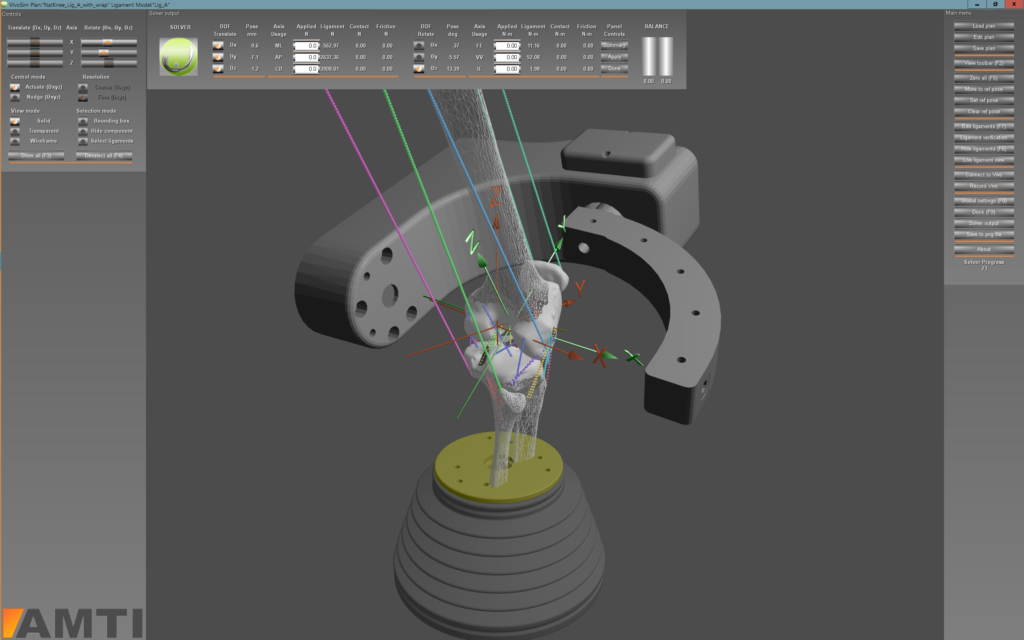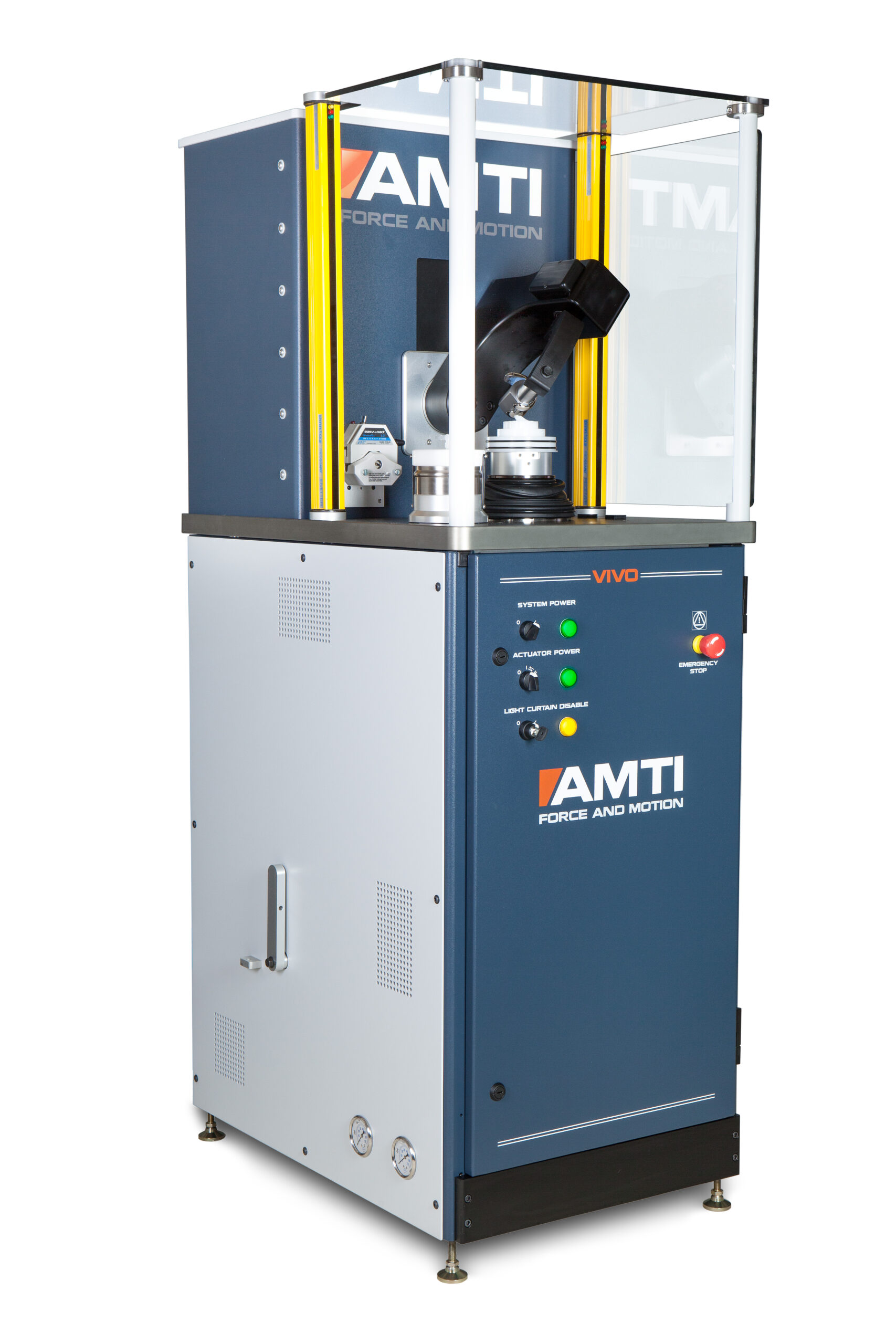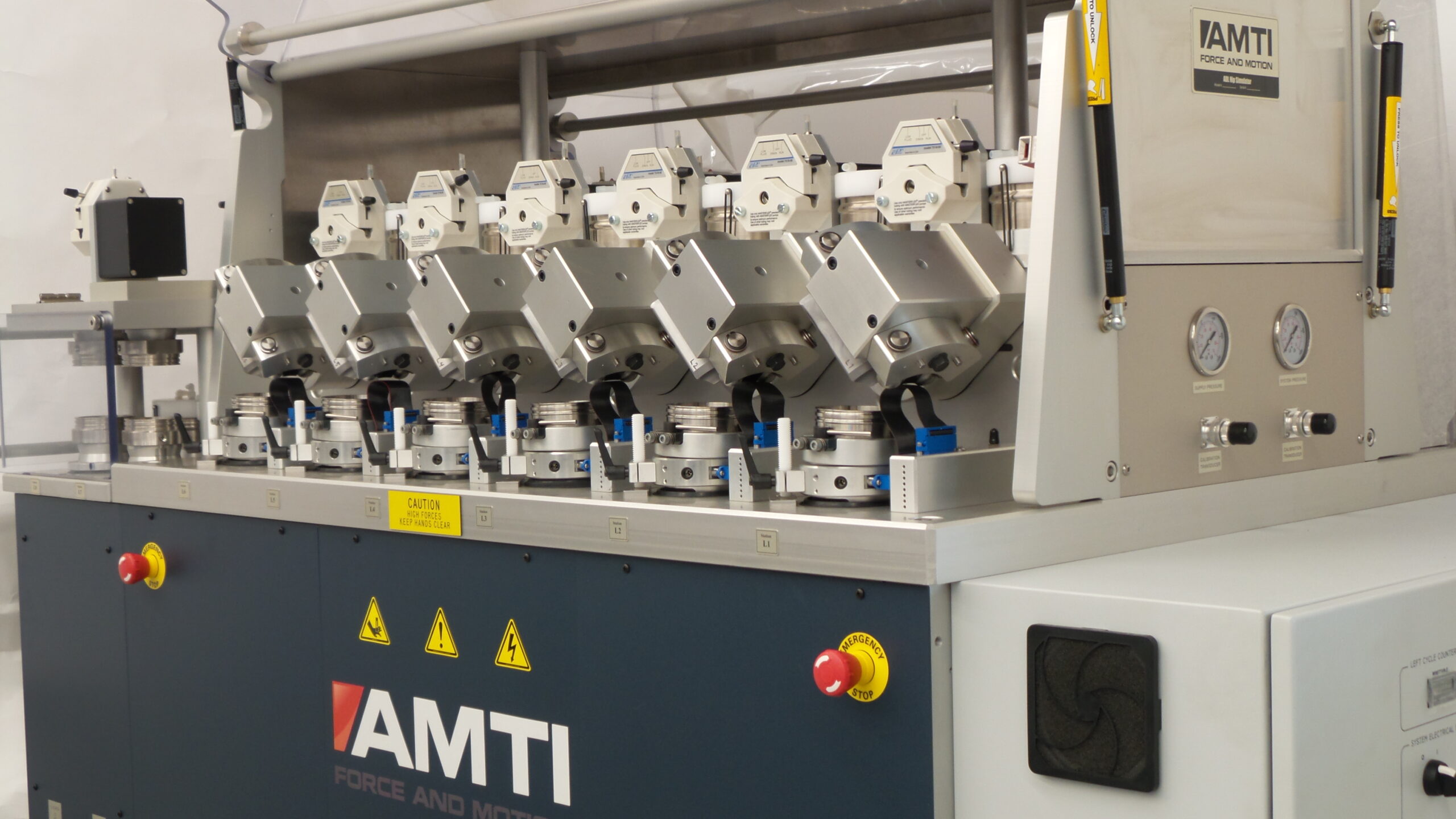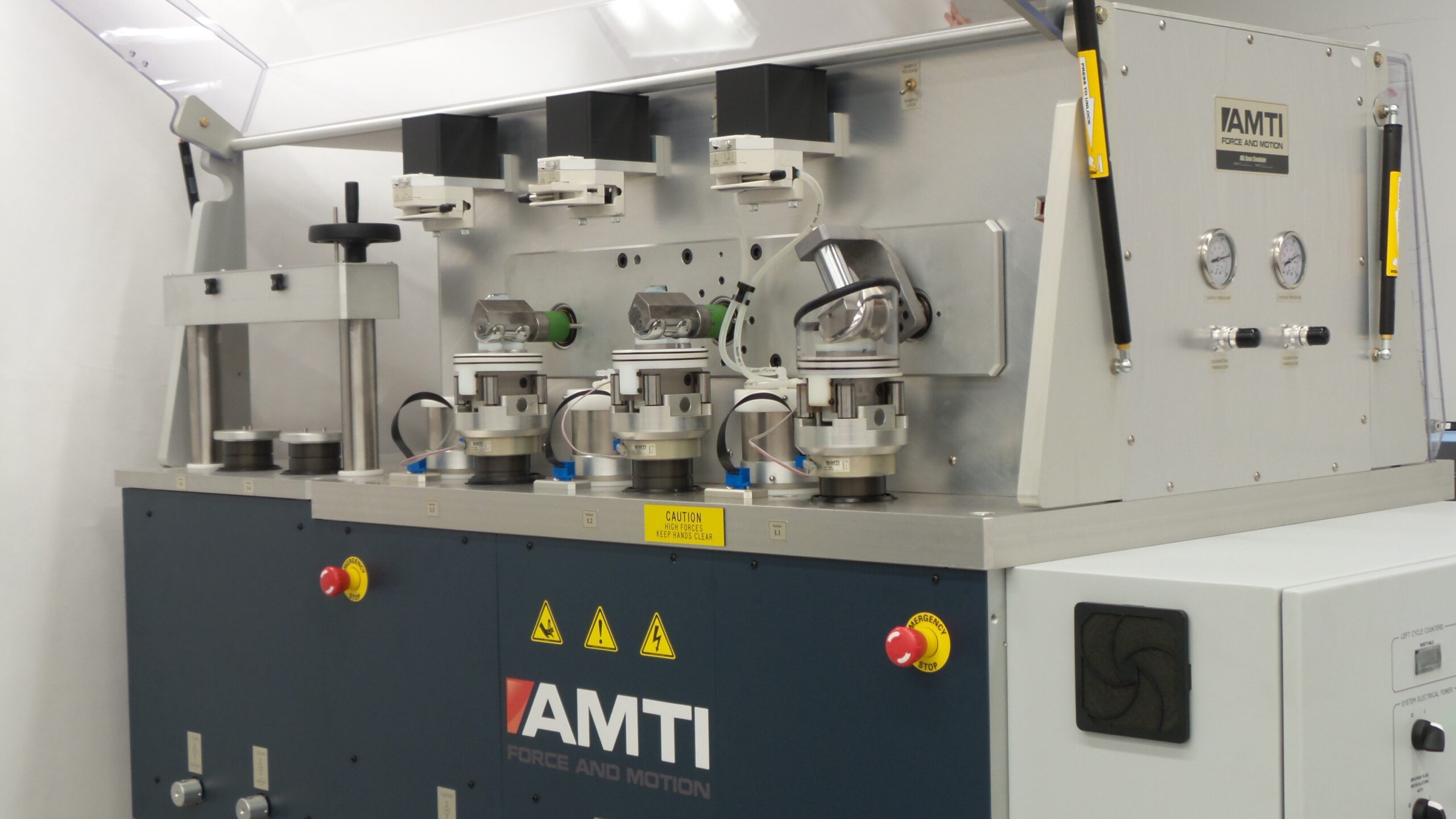VivoSim can function as an adjunct to AMTI’s VIVO™ joint simulator. In this mode, the VIVO™ joint simulator provides a real-time physical solution of the physical joint contact mechanics and kinematics. Kinematic data from VIVO™ is passed over a LAN connection to VivoSim, where a virtual VIVO™ is re-created. This information drives an exact virtual replica of the actuators and mounting stages of the VIVO™. When a 3-D model of the joint is added and registered to the virtual actuators, VivoSim shows a visualization of the physical motion of the machine. VivoSim can also read the same .lig file used to implement a multi-fiber ligament model on the VIVO™ machine. The ligament model is then displayed in exact geometric relationship to the joint model, so that the interactions between joint, ligaments and machine kinematics may be visualized. Since VivoSim has a built-in duplicate of the ligament fiber calculations used in VIVO™’s real-time controller, the properties of individual ligament fibers – length, strain, tension, force and moment components – can be displayed and analyzed. Resultant force and moment on the joint due to the ligament model are also displayed in exact agreement with the computation on the VIVO™ machine.
Multi-fiber ligament models can be edited and viewed in VivoSim, using its facilities for visualizing and evaluating ligament models. Any multi-fiber ligament model in VivoSim can be downloaded to VivoControl and the VIVO™ machine when the LAN connection between VivoSim and VivoControl is online. Multi-fiber ligament models saved in VivoSim can also be loaded into VivoControl from its own user interface because both programs share a common format for ligament files ( .lig file type).
VivoSim can record motion for playback later and for archiving. The archived motion results are stored in an ASCII-readable format and can readily be imported to the customer’s other analysis software. Also, the files may be played back in VivoSim. VivoSim’s playback mode supports variable-speed playback, frame-by-frame advance, pause, rewind and fast-forward.
In VIVO™-linked mode, VivoSim may be used with any joint that can be mounted on the VIVO™ machine. As noted above, the contact detection algorithm in the initial release of VivoSim is designed and tested for knee joints and might not be satisfactory for other joints. In VIVO™-linked mode, the contact detection algorithm is not used, because all kinematics – including the contact constraint – are determined by data from the machine. The multi-fiber ligament code in VivoSim duplicates that in the VIVO™ and therefore is not affected by the type of joint being tested.
To operate in real-time display mode for a VIVO™ system, both the VIVO™ host computer (running the VivoControl user interface) and the VivoSim computer must be connected on the same LAN subnet. The VIVO™ host computer is equipped with a second LAN port, which may be used for this purpose. The LAN connection between the computers is managed in two phases. First, the connection is established. This needs to be done only once per session. Once the LAN connection established, VivoSim may be switched between “local” and “tracking” mode whenever desired. In “local” mode, VivoSim operates exactly as in standalone mode, with the added capability to download the multi-fiber ligament model to VivoControl at any time. “Tracking” mode changes the source for kinematics to the data coming from the VIVO™ machine.




